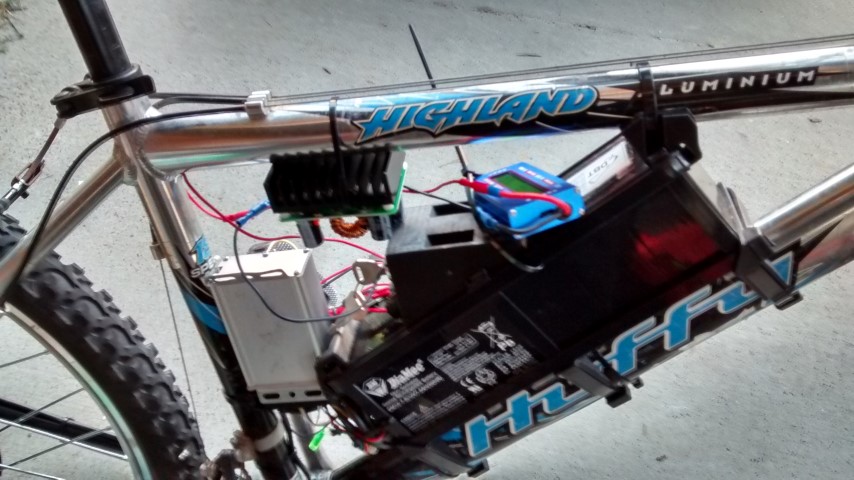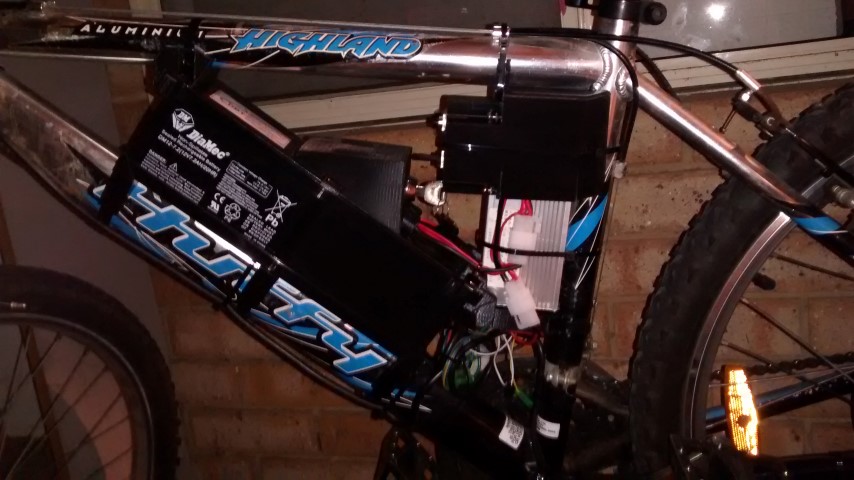Also, this was done with a 125w bicycle which was power-increased to 200w, so within the law... But the theory is now tested and proven. Increasing your electric bicycle output is as simple as inserting a small bit of circuitry into the line between the battery and the controller, which is actually a pretty easy place to put it and can usually be achieved without modifying the bicycle and, in many cases, without being obvious. There is also no simply way for manufacturers to stop this from happening but they shouldn't, as many overstate the power output of the bicycle - eg, claiming 200w when the real continuous power is only 120w - etc. This has the effect of a lower top-speed, but does make a cheaper battery last longer and given more range. That should be considered by anyone considering this also.
So, where to begin. The idea is that power from the motor is easily upgraded by increasing voltage, but not everyone wants to go from 24v to 36v - or from 36v to 48v - as that means using a different battery. Most motors will easily handle the extra power, so a battery change for a different model of battery is pretty simple right?
The power output increase goes something like this:
24v to 36v - Increase 225%
24v to 48v - Increase 400%
36v to 48v - Increase 178%
48v to 60v - Increase 156%
These are all easily achieved, but often batteries step up in 12v ( or thereabouts ) increments. As such, even though changing the power by using a battery from a different bicycle is convenient, it's difficult to get small increases in power, or to fine-tune the maximum power output.
So I started to think about it an bought one of these on Ebay.

These things cost about $10 and will increase output voltage at power outputs of up to 600w, but basically have 10A output, and will take 15A input. You can also possibly slave them in parallel ( but would require precise settings ) or get a more powerful module.
Then I connected it inline between my battery and my bicycle. The result is this -

Not very pretty, but it worked - I set the voltage up a few volts, and my top speed increased from 19kph to 24kph instantly. I rode around a bit and eventually managed to blow the fuse as I didn't set the output current limitations on it and overloaded the device when the motor stalled, but with the current limitations set, I'm pretty sure i could have gotten the exact power I wanted - So that's for the next test.
This one is pretty large, but with appropriate rebuilding and heatsinking into the bicycle frame, I think this could easily get down to the size of a tic-tac box, or fit into a plug where the batteries meet the controller. In some cases, bicycles will already be at the legal limit, and won't need tweaking, but even though I can get to 19kph easy enough, sometimes I think it would be nice to have a "turbo" switch that will push me out to 24kph for longer stretches of straight path for commuting.
Anyway, I thought I'd put this up since it's of interest. I don't really think it's likely to be abused, because for those people it would be easier to just buy a larger battery - but for the rest of us, something like this to fine-tune maximum speed might be interesting.
At a note - these are supposed to be 95% efficient - so you do drain the batteries a little faster ( about 5% faster ) - but otherwise, if you have plenty of battery power, a plug-in "turbo" device might be interesting. This is not an endorsement or a review - Just an experiment - Try it at your own risk -
Regards
David

